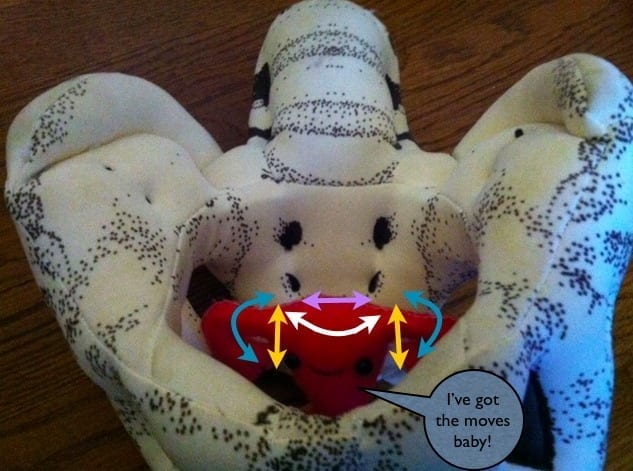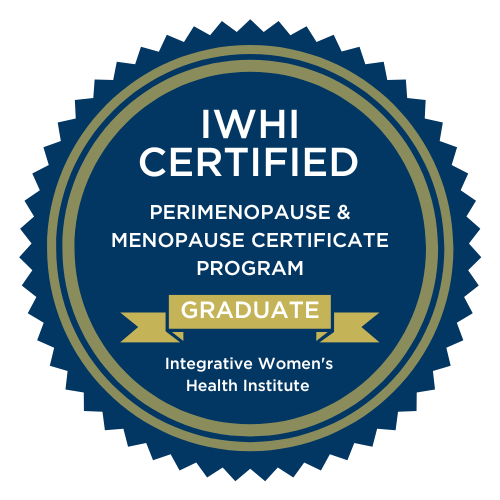Imagine sitting in one position ALL. Day. Long. …never moving out of that one position. The seat of the chair pressing against the back of the legs would compress blood vessels and result in pain and numbness. If you stayed in that one position long enough, the compression of the vascular system would impede blood and lymph flow and lead to varicose veins, edema, discoloration of the feet and even cell death. Fortunately, your body signals you when it’s time to get up, move around and change positions to avoid discomfort and tissue damage.
A uterus that is displaced and immobile experiences these similar vascular, lymphatic, nervous and cellular disturbances. I’ve personally seen color return to the feet moments after restoring a right leaning uterus back to center. The incident that stands out in my mind is a client who was eight months pregnant with a right leaning uterus, her left foot looked of normal color, but her right foot was purple. There was also an obvious temperature difference between the left and right foot, as well as edema of the ankles. Using the gentle uterine positioning techniques was all it took to restore blood flow to her extremities. By the end of the session, the color and temperature of her feet equalized.
One doesn’t need to be pregnant to have an immobile uterus affect surrounding vessels and organs. The uterus weighs about four ounces when not menstruating and can double in size to eight to ten ounces right before and during your period. That’s a lot of weight on the surrounding blood and lymph vessels as well as the rectum or bladder, depending on which way the uterus is adhered to the structures.
The uterus must be mobile for proper physiological function. When the uterus is fixed in one position fibrosis of the ligaments can result and impair local circulation. When circulation is impaired, the cells won’t get proper nutrients or oxygen and pain will follow.
When the surrounding structures are so restricted they bind down on the tissues affecting cellular activity. The organs are the sum total of cells, so what is happening in the cells influences the state of the organs.

Yellow: inferior/superior White: rotational Purple: transverse plane Blue: side bending
A few of the symptoms of an immobile uterus may include:
- painful and/or irregular periods
- back, hip, leg, pelvic and/or abdominal pain
- hemorrhoids/varicose veins
- hormonal imbalance and fertility challenges
- irritable bladder
- constipation especially with a retroverted uterus
- painful intercourse
Contributing factors that may lead to an immobile uterus?
- sedentary lifestyle
- inflammation
- adhesions from surgery
- poor pelvic alignment
- adhesions from infection
- adhesions from trauma
What you can do to keep circulation flowing through the pelvis:
Breathing by expanding the ribcage in a circumference, rather than shallow upper chest breathing mobilizes the uterus. “Although the effect is difficult to quantify, some studies suggest that the “attractive” force of the diaphragm reduces the effective weight of the uterus by approximately 50%,” -Jean-Pierre Barral, D.O.

Massage helps improve arterial, venous, and lymph flow. Margo loves her Arvigo massage.
In the online Womb Care course I’ve included a module titled Pelvic Alignment because pelvic alignment influences uterine health.
For instance, the broad ligament connects the uterus to the lateral walls of the pelvis. The broad ligament is an extension of the peritoneum and envelops the uterus in its folds, so it appears as two flat wide ligaments extending outward laterally. Uterine ligaments are different from other ligaments in the body; uterine ligaments create pathways for blood vessels.
In this module, you’ll learn how pelvic alignment affects reproductive and pelvic floor health. I’ll teach you exercises and practical ways to incorporate pelvic health into your daily life. There are 9 video, an exercise ebook, and exercise chart in this module alone. LEARN MORE>>>








I love and learn so very much from your posts!! I work in a Chiropractic office in the rehab room. I am Egoscue Posture alignmnet specialist/ACE healthcoach/200 IYT yoga cert./ I have been following Katy Says/Align Integration/Julie Wiebe. I have just started working with a young mother of 4 kids!!She has vaginal varicose veins and down her legs also more on her right than left. AND purplish like you mentioned above!! She started with issues with her 3/4th child. They become very big during her period days! I just started her on correct alignment with bolster ribcage alignment with pelvis and focus on getting the Intra-abdom. pressure corrected(holds breath!).She has a bladder sling/mesh. I may need some guidance with this lady!!What pelvic health questions should I have her ask her gyno. before adding any more corrective exercises?AND she did not even come into the office for this she came in for right shoulder/neck pain and headaches! Whew!!Any suggestions would be GREATTTTTTTTTT!Thank you for your time~ angela
Hi Angela, The human body is so complex, it’s hard to say what to do without evaluating her myself. Alignment is probably key, and you are already working on that. A Visceral manipulation therapist or osteopath who does manual therapy may be able to help her with pelvic organ motility and pelvic adhesions. Deep work can’t be done when a align is present. They may also evaluate her liver motility/mobility. Sometimes a congested liver can cause right shoulder and neck pain AND a congested pelvis. That’s probably the first place I would look.
Thank you Barbara for your response!! Yes, I have started with the basics of alignment and the Intra-abdom. /pelvic floor/diaphragm/trA/ work!!Hard for her to even get her diaphragm to drop down!! I am suspecting a misaligned uterus/bladder/adhesions/knarly stuff in her pelvis!!What specific questions should she ask her gyno. about the congestion/varicose veins/bladder mesh issue?I may suggest a consult with you so she can filter out invasive procedures( if not needed)!! :)Thank you so very much! YOu are just lovely and I love your silly, witty humor mixed with knowledge and wisdom!!Angela
Oh! and I have Alignment Matters DVD set!!
Thanks for sharing this informative article. I have tried massaging my abdomen after learning one day health workshop the Maya Way. Still trying to figure out the hard internal organs in my lower abdomen. Fascinating the discover my own body.
Hi Barbara! Thank you for bringing such great attention to this. More and more I’m seeing the significance of uterine mobility in my practice (I’m a pelvic health physiotherapist in Canada). I love how you’ve gone into it in this article. I’ve posted it on an international women’s health physio forum, so get ready for some traffic. 😉
Thank you, Mandy!
Gravity is the major factor even if we dont recognize its effect. Live in a space station and see how people move around easily with out the force of gravity to deal with proves this.